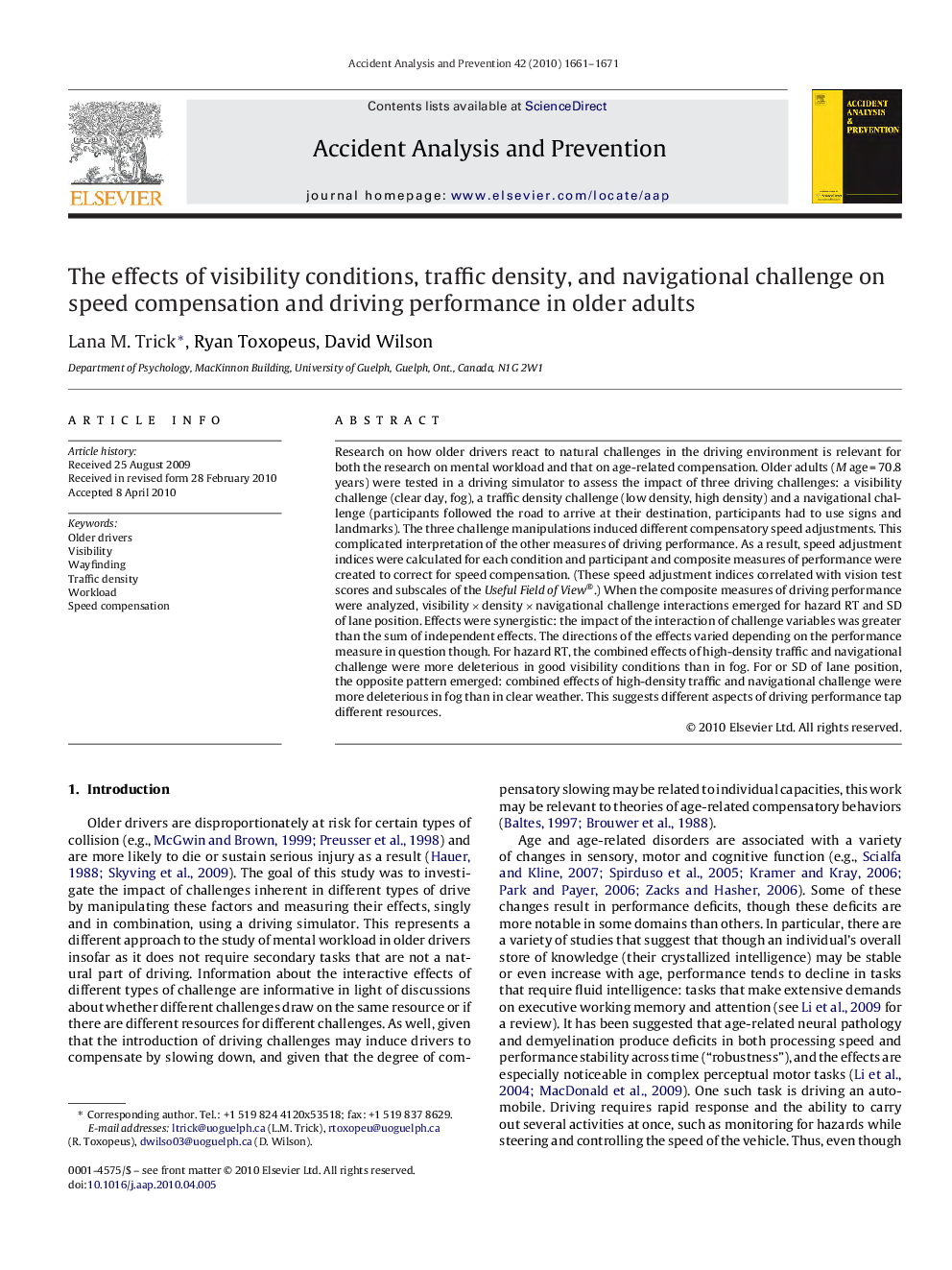| Article ID | Journal | Published Year | Pages | File Type |
|---|---|---|---|---|
| 573141 | Accident Analysis & Prevention | 2010 | 11 Pages |
Research on how older drivers react to natural challenges in the driving environment is relevant for both the research on mental workload and that on age-related compensation. Older adults (M age = 70.8 years) were tested in a driving simulator to assess the impact of three driving challenges: a visibility challenge (clear day, fog), a traffic density challenge (low density, high density) and a navigational challenge (participants followed the road to arrive at their destination, participants had to use signs and landmarks). The three challenge manipulations induced different compensatory speed adjustments. This complicated interpretation of the other measures of driving performance. As a result, speed adjustment indices were calculated for each condition and participant and composite measures of performance were created to correct for speed compensation. (These speed adjustment indices correlated with vision test scores and subscales of the Useful Field of View®.) When the composite measures of driving performance were analyzed, visibility × density × navigational challenge interactions emerged for hazard RT and SD of lane position. Effects were synergistic: the impact of the interaction of challenge variables was greater than the sum of independent effects. The directions of the effects varied depending on the performance measure in question though. For hazard RT, the combined effects of high-density traffic and navigational challenge were more deleterious in good visibility conditions than in fog. For or SD of lane position, the opposite pattern emerged: combined effects of high-density traffic and navigational challenge were more deleterious in fog than in clear weather. This suggests different aspects of driving performance tap different resources.
